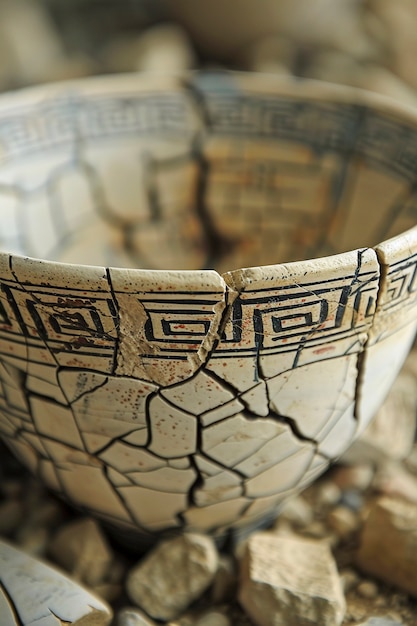
As we strolled along the grassy path, we saw the stone monument standing firm, resembling an upturned boat. It was surrounded by a field of wildflowers, glowing in the late afternoon sun.
We had come to visit the Naveta d’es Tudons, one of Menorca’s most famous prehistoric monuments. This burial chamber dates back to around 1000 BC and was built by the Talayotic culture.
The Naveta des Tudons (Naveta means boat in Catalan) was excavated by archaeologists in the 1960s. They found the remains of over a hundred men, women, and children, along with some of their personal belongings like metal hair ornaments and spearheads.
Once a body was placed inside the tomb, it was sealed. Later, the bones and skull would be moved to one side to make room for the next person. Menorca is dotted with similar burial chambers, towers, and settlements unique to the island. These are now being preserved with the aim of having them declared a UNESCO World Heritage site.
Menorca’s abundance of stone meant that the Talayotic buildings were left intact for us to visit today, unlike other places where stone was repurposed over the centuries.
During our visit to Naveta d’es Tudons, we noticed how well it had been restored to its original appearance, except for the final stone missing from the parapet at one end. According to local legend, two giants competed for the same girl’s hand. One was tasked with building a Naveta, the other with digging a well. The first to complete their task would win the girl. When the giant building the Naveta saw his rival strike water, he angrily threw down the final stone, killing him. Realizing what he had done, he fled, leaving the girl with neither suitor. This legend explains the missing stone at Naveta d’es Tudons.
To visit Naveta d’es Tudons, it’s a 15-minute drive from Ciutadella, just off the main Ciutadella – Mahon road. If you don’t have a car, a taxi from Ciutadella is probably the easiest option. Plan to spend 30 minutes to an hour at the site. There is a small charge for entry.
On another day, Zoe Dawes and I visited another ancient site, the Naveta de Rafal Rubí, where two Navetas stand close together. These had not been restored and appeared as a pile of rocks. The upper part of the Naveta had collapsed, and the stones seemed to have disappeared.
At the south Naveta de Rafal Rubí, we crawled through a small, finely cut square hole to stand inside, under a roof of huge stone slabs. Inside, it felt bare and bleak, not helped by the pouring rain. All remnants of the past had been taken to Menorca’s archaeology museums. The entrance stone was kept in place by a lip cut by expert stone masons of the Talayotic culture.
Without our guide, we would never have found this site, hidden down a grassy path and surrounded by meadows and farmland. It reminded me of how Stonehenge must have looked a hundred years ago, just part of the farming landscape.
We moved on to the second Naveta, the northern one. The upper chamber had collapsed, and we didn’t go inside due to the rain. We made our way back through the olive trees and stone walls to the road.
To visit Naveta Rafal Rubí, it’s about a 10-minute drive from Mahon and easiest to visit by car using Google Maps. The site is on private land with parking on the road.
In addition to the burial chambers, Menorca has many conical structures called Talayots, named after the Spanish word for watchtower. These towers show that the people lived in larger, organized settlements. At Torre d’en Galmes, I saw some of these Talayots, which seemed to double as living spaces with a watchtower on the upper level. They were usually within sight of each other, possibly used as a signaling network in times of danger.
Another unique feature of Menorca’s settlements are the Taules, T-shaped rocks made of a slab of stone embedded in the ground with another rectangular stone on top. The name Taula comes from the Catalan word for table. These structures demonstrate the advanced stone-working skills of the Talayotic people and are thought to have religious or ritual significance.
At Torre d’en Galmes, I sensed the scale and organization of the Talayotic settlements, with circular stone enclosures and inner courtyards. Different chambers and rooms were built around the circle for sleeping, storage, and keeping animals. The society had a system of channels to collect rainwater and transport it to underground reservoirs called Sitjots. Large slabs of rock were balanced on stone columns to make shelters, possibly used as storage chambers with roofs of leaves and branches.
Menorca is an island with plenty of stone but very little wood, so stone was used in the same way as huge oak beams might have been used elsewhere in Europe for building.
If you visit Menorca, take time to see some of these unique prehistoric monuments and settlements. There are 32 sites that are part of the UNESCO World Heritage proposal, and maps are available from tourism offices around the island. You can also find more information on the Menorca Tourism website about the Talayotic route. The Menorca Arqueologica arranges regular group tours to see some of the main sites. For an individual tour, I highly recommend Luis Amella of Menorca Guides.
While in Mahon, I visited a couple of museums to learn more about the Talayotic culture. The Ca n’Oliver house in Mahon had an interesting exhibition in the basement about the Talayotic culture, with household pots and grinding stones on display. The Museum of Menorca covers the island’s history from the first inhabitants to the 19th and 20th centuries, including all the Talayotic history.
If you visit Menorca, I hope you’ll take time to explore these fascinating prehistoric sites and learn about the island’s rich history.